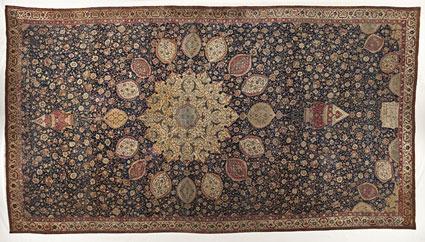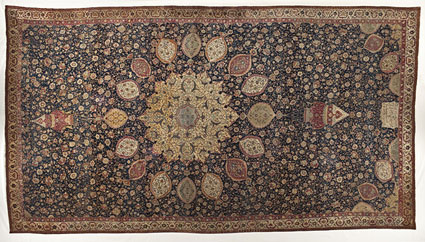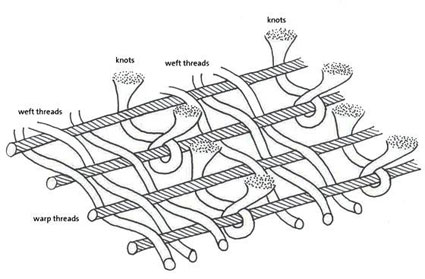There’s a good chance that you have a modern Oriental carpet in your home but, if you’re like me, you don’t know too much about how it was made. I recently received an education on the weaving of classical Persian carpets from our Curator and Department Head of Art of the Middle East, Linda Komaroff.
One of the first things she taught me about Persian pile carpets, such as LACMA’s renowned Ardabil carpet (on view now), is not to refer to them as rugs. (It’s not a rule, per se, simply a more formal salutation. Linda noted that using the word rug would be similar to calling a painting a picture.) Next I learned about the three components of a hand-woven Persian pile carpet: warp, weft, and pile.
The warps form the first part of the carpet’s foundation. Wool, silk, or cotton yarns are tightly stretched parallel to each other on the loom. Next there is the weft, composed of similar threads which pass under and over the warps from one side to the other. To form the pile, dyed silk or wool yarns are tied around consecutive sets of adjacent warps to create the elaborate designs in the carpet. As successive rows are tied to the foundation, these knots become the pile. If it sounds like a long and painstaking process, it is. As I tweeted a couple of weeks ago, an outstanding classical Persian carpet such as the Ardabil took about four years to make and, at 23 ft. 7 in. by 13 ft 1 ½ in, is comprised of approximately 15.5 million knots.





